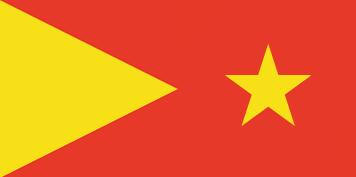
The State of Tigray

The State of Tigray consists
of 4 administrative zones, one special zone, 35 woredas and 74 towns. The State
Council which is the highest administrative body of the state is made up of 152
members, the executive body consists of 16 personalities.
CAPITAL CITY
The capital city of the
State of Tigray is Mekele
LOCATION
The State of Tigray is
located at the northern tip of the country. The region shares common borders
with Eritrea in the north, the State of Afar in the east, the State of Amhara in
the south, and the Republic of the Sudan in the west
AREA
The State of Tigray has
an estimated area of 80,000 square kilometres.
POPULATION
According to the 1994
Census the state's population size was 3,136,267 of which 1,542,165 were males
and 1,594,102 were females. The urban residents of the region number 468, 478
and its rural residents 2,667,789. In terms of religion 95.5% of the population
are Orthodox Christians, 4.1% and 0.4% are Muslims and Catholics respectively.
Regarding ethnic composition, 94.98% are Tigraway, 2.6% Amhara, 0.7% Erob
and 0.05% Kunama. Tigrigna is the working language of the state.
MAJOR
ECONOMIC ACTIVITIES
About 83% of the
population are farmers. Teff, wheat, and barely are the main crops. Other
agricultural products include beans, lentils, onions, and potatoes. Irrigation
and terrace farming are used on the steep slopes. The region is also known for
its export items of cotton, incense, sesame and minerals. 1.5 million hectares
of land in the region is cultivable, of which one million hectares is being
cultivated, while 420,877 hectares of land is terraced. Handicraft (gold smith,
painting and wood sculptures) is another area of activity observed in the
historic cities of the state.
TOPOGRAPHY
AND CLIMATE
Centuries of erosion,
deforestation and overgrazing have left the region with dry and treeless plains,
hills and plateau. Nevertheless, an amazing landscape of chains of mountains
ranging from 3,250-3,500 meters, cliffs, ledges and precipice are natural
attractions of the region. Two altitude extremes: the elevation of the region
rises from 600-2,700 above sea level, the Tekeze Gorge, 550 meters above sea
level and the "Kisad Gudo" peak at 3,935 meters above sea level are
among Tigray’s natural scenery which is classified into the central highland,
the western lowland and eastern escarpments. The climate of the region is
characterized as "Kolla" (semi arid) 39%, "Woina dega" (warm
temperate) 49%, and "Dega" (temperate) 12%. The average annual
rainfall is between 450-980 mm.
RIVERS
AND LAKES
Tekeze and Mereb are
international rivers that pass through the state of Tigray with their
sources in the Amhara and Eritrean Mountains, respectively. There are small
rivers such as Geba, Worii, Berber, Arqoa and Teter, which are suitable for
irrigation development. Tekeze is a promising source of hydroelectric power.
Lake Ashenge, which is found in the state, is an interesting area for observing
birds and for fishing.
LIVESTOCK
The State claims to have
about 11.51 million domestic animals (1997 G.C.) of which 2.15 million are
cattle, 5.63 million are sheep and goats and 392,000 are pack animals.
FAUNA
Elephant, leopard,
klipspringer and bush back are among the wild animals that are found in the
state.
MINERALS
Tigray is one of the
richest areas in Ethiopia in mineral resources. Some of the explored metallic
minerals of the state include gold, copper, iron ore, zinc, lead and nickel.
Asbestos, Silica sand, Kaolin, graphite, gypsum gemstone, marble, granite slate,
limestone and dolomite are among the non-metallic minerals.
TOURISM
AND HERITAGE
Tigray is among the few
in the world, frequently mentioned in civilization and cultural lists of
humanity for its universally accepted historic sites. The state has some of the
most important historical monuments of the continent. It is very well known for
its pre-Christian monuments. The Axum obelisks or Steles (2nd century BC), the
pre-Axumite Yeha’s "Temple of The Moon" (5th century BC), bath and
palace of the Queen Sheba and the Ark of the Covenant, are among the most
prominent. The Ark of the Covenant, is said to have been brought from the Temple
in Jerusalem. Moreover, the region has served as entrance of the two world
religions- Christianity in the 4th century AD, and Islam in the 6th century AD
into Ethiopia. The mosque of Negash is also another historical site. There are
more than 120 rock hewn churches and caves that serve as monasteries scattered
over the mountains of Tigray, containing gold and silver crosses, glittering
crowns, manuscripts and stones bearing ancient Sabean inscriptions. These and
other cultural heritages are priceless assets of the country.
INVESTMENT
The state of Tigray has created favourable conditions and incentives in order to
attract investors. So far, until the beginning of 1998, there were 361 projects
with a capital of 4 billion Ethiopian Birr. These projects focus mainly on
agriculture, industry, hotel and tourism, social services, mining, construction
and transport. About 200,138 persons will benefit from the job opportunity
created by these projects. The state also has large farming areas suitable for
the production of cash crops such as cotton and different kinds of oilseeds.